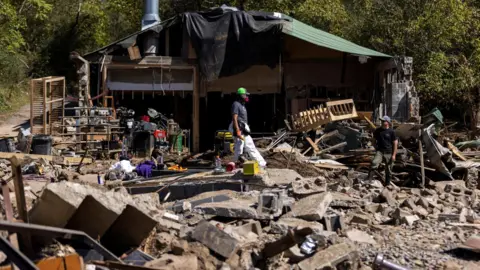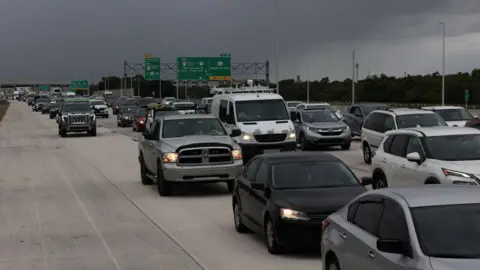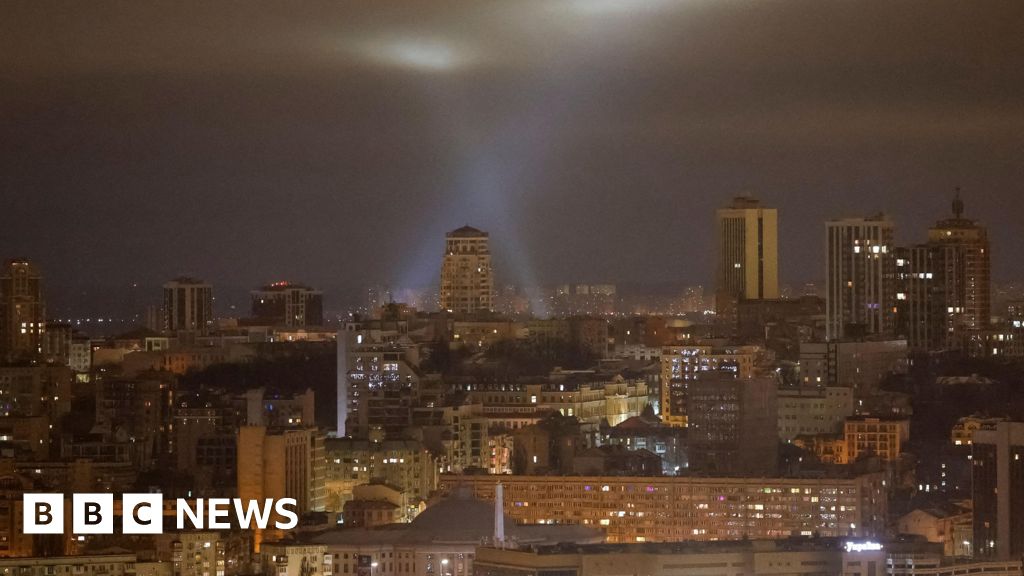ARTICLE AD BOX

 Reuters
Reuters
Hurricane Helene - the deadliest US storm since Katrina in 2005 - killed at least 225 people and caused billions of dollars' worth of damage
About 14 tropical storms develop over the Atlantic Ocean, Caribbean Sea and Gulf of Mexico each year, according to the United States Weather Service.
Out of these storms, seven will become hurricanes.
Not all of these will make landfall - most will remain over the ocean.
But some, such as Hurricane Milton, which is expected to hit the Florida coast on Wednesday evening, end up striking land, with huge life-threatening impacts.
A storm needs tropical conditions to develop into a hurricane - specifically, warm waters of at least 27C (80F). It then intensifies and starts to spin because of a phenomenon known as Coriolis force, a product of our planet's rotation.
The speed at which these storms rotate determines what category the hurricane will be - and how much impact it can cause.
Dr Carmen Solana, an expert in natural disasters at the University of Reading, says the speed of the wind is "very important" in terms of destruction.
Strong winds will often cause the most damage to buildings and structures, and they can pick up debris which creates further impact.
Structures that can withstand strong winds and are hurricane-resistant can make a huge difference to the overall impact of a storm, so countries with codes and regulations in place tend to see less of this type of destruction than those which do not.
The strong winds and debris can affect key infrastructure such as roads and escape routes, as well as cutting off areas from emergency services and other important resources.
Rising water levels and heavy rainfall, leading to flooding and landslides, and storm surges can also take their toll on local infrastructure.
"The way cities are designed, built and developed massively impacts the ability of the city to drain water," says Dr Helen Hooker, a meteorologist at the University of Reading.
Bigger city areas can experience flash flooding, whereas mountainous regions often suffer other harmful effects such as landslides.
These strong currents can also carry heavy bits of debris, leading to further damage.
"A mattress or a table being moved around is like having a boulder moving around with the water," says Dr Hooker.
Some cities, known as sponge cities, are built with a focus on green spaces which can absorb water and reduce the impact of heavy rainfall.
Although hurricanes are known for their wind speeds, the vast majority of deaths are caused by water hazards such as storm surges, flooding and landslides, which account for nearly 90% of those killed in hurricanes.
Particularly in coastal areas, such as Florida, storm surges can be one of the deadliest consequences of a hurricane.
The US National Hurricane Center is warning that Hurricane Milton could bring a record storm surge of 10-15ft (3-4.5m), as well as localised rainfall of up to 1.5ft.
This comes only two weeks after Hurricane Helene brought historic flooding and a storm surge of more than 15ft as it barrelled across the south east of the US.
The states in Helene's path had already had a lot of rain in the days before its arrival, so the ground was already saturated. This meant flooding was more likely because the ground could not absorb any more water.
Helene's vast size, and the sheer scale of its rainclouds and wind field coverage, meant that despite the storm making landfall on Florida's Big Bend, even cities such as Miami, many hundreds of miles away, experienced wind gusts of more than 70mph (110km/h).
It also meant the extreme rainfall took a long time to pass over any location in Helene's path.

 Getty Images
Getty Images
Infrastructure such as big highways, as we see here in Florida, can make a difference in evacuating people safely, says Dr Hooker
While the US has experienced a number of powerful storms in the past, it is able to recover from these disasters much more efficiently than poorer countries.
This comes down to a number of factors, including geographical location, housing and infrastructure, and the financial and physical resources available to reconstruct.
Preparation can also make a significant difference to the impact of these storms and how quickly communities are able to rebuild afterwards.
As Florida braced for Milton's arrival, the state undertook its largest evacuation effort in years, hoping to remove as many people as possible from projected areas of danger.
"The sheer size of this storm means there are so many places on alert, and lots of people trying to move relatively quickly," Dr Solana says.
This made the task much more challenging than in a less populated area.
Agencies such as the US Federal Emergency Management Agency (Fema) are well prepared for these events, she says, and local authorities were able to build safe shelters and provide support and resources for residents.
"But there are all sorts of social problems that come with this," Dr Solana adds.
Money can also be a significant issue for people trying to keep themselves and their families safe - in the US and beyond.
Some may not have the means to be able to evacuate and follow other safety orders, or might fear the impact evacuating can have on their jobs and livelihoods.
"People have the right to stay and they are worried about a lot of things, such as money, their pets, if they don’t have resources or knowledge, don’t want to go into shelters," Dr Solana adds.
Trust in the local authorities can also mean people are less likely to follow this advice, while in areas where storms happen more regularly, residents may feel a false sense of security if they have not been previously affected.
For developing countries in particular, Dr Hooker says, early warning systems need to be community-led. Lack of preparation, government resources and support in these countries can lead to devastating consequences.
"If the communities themselves can take ownership, if they can take a lead, they are more likely to take action when they are required to do so," she adds.

 3 months ago
19
3 months ago
19








 English (US) ·
English (US) ·